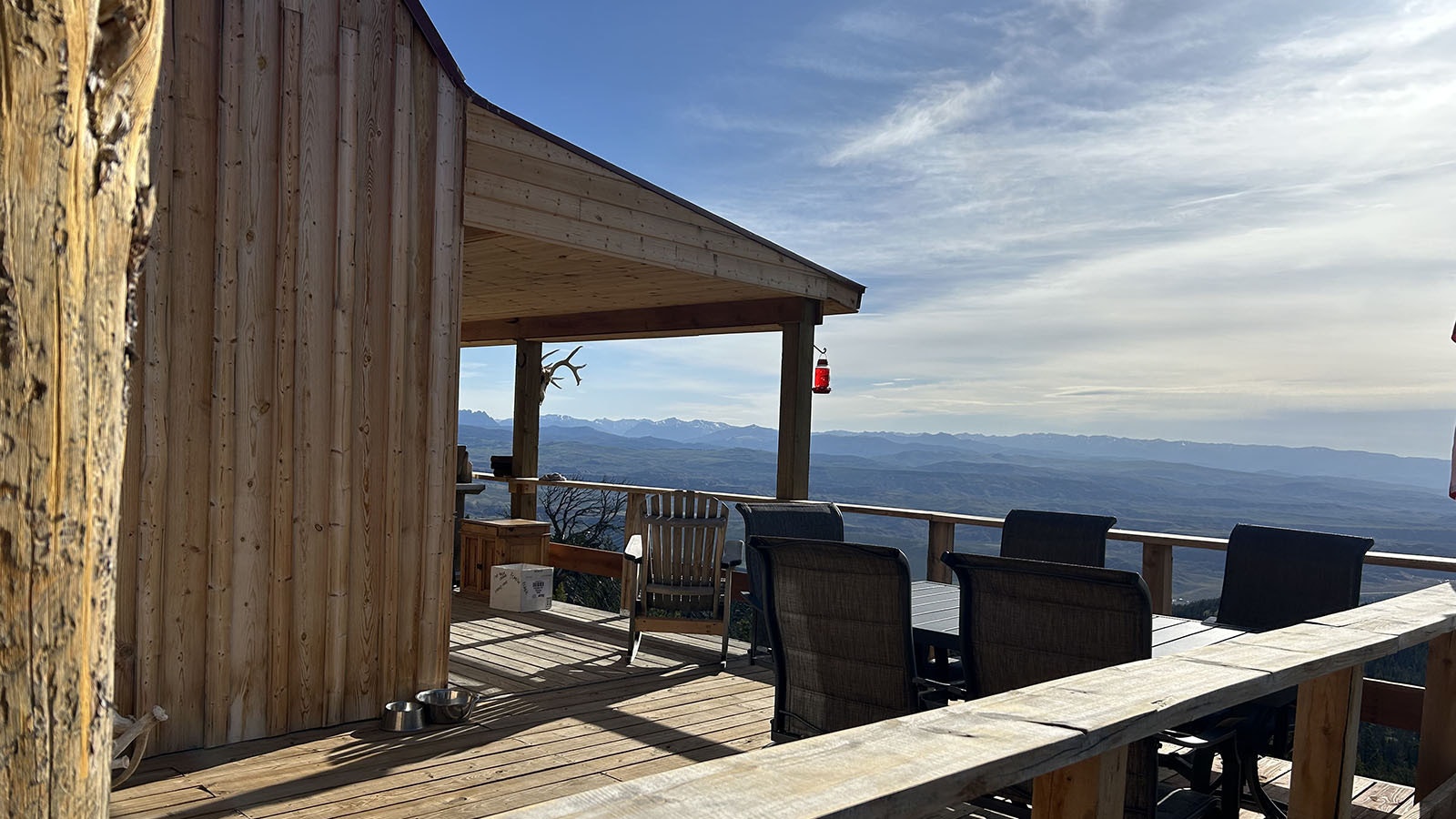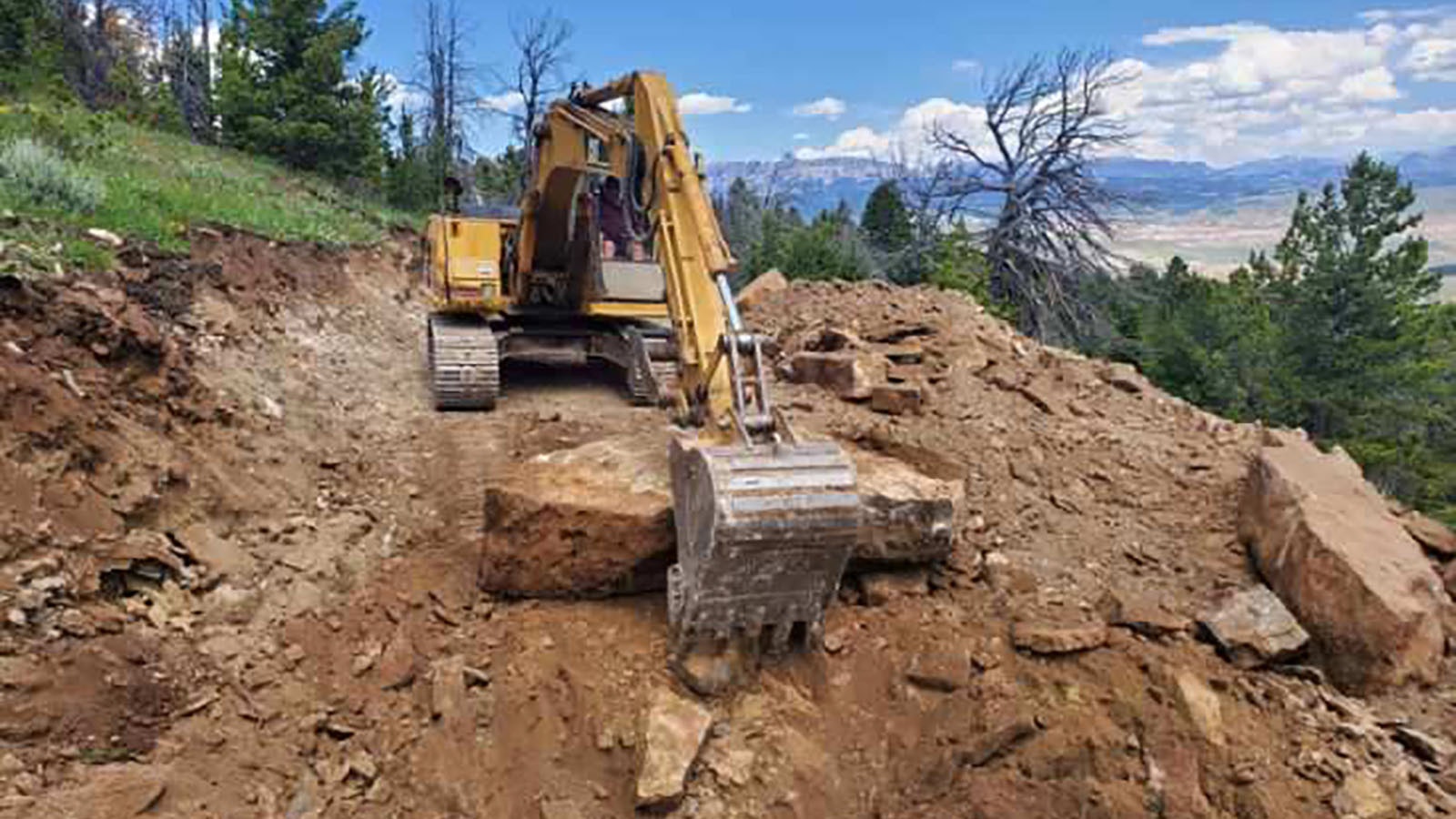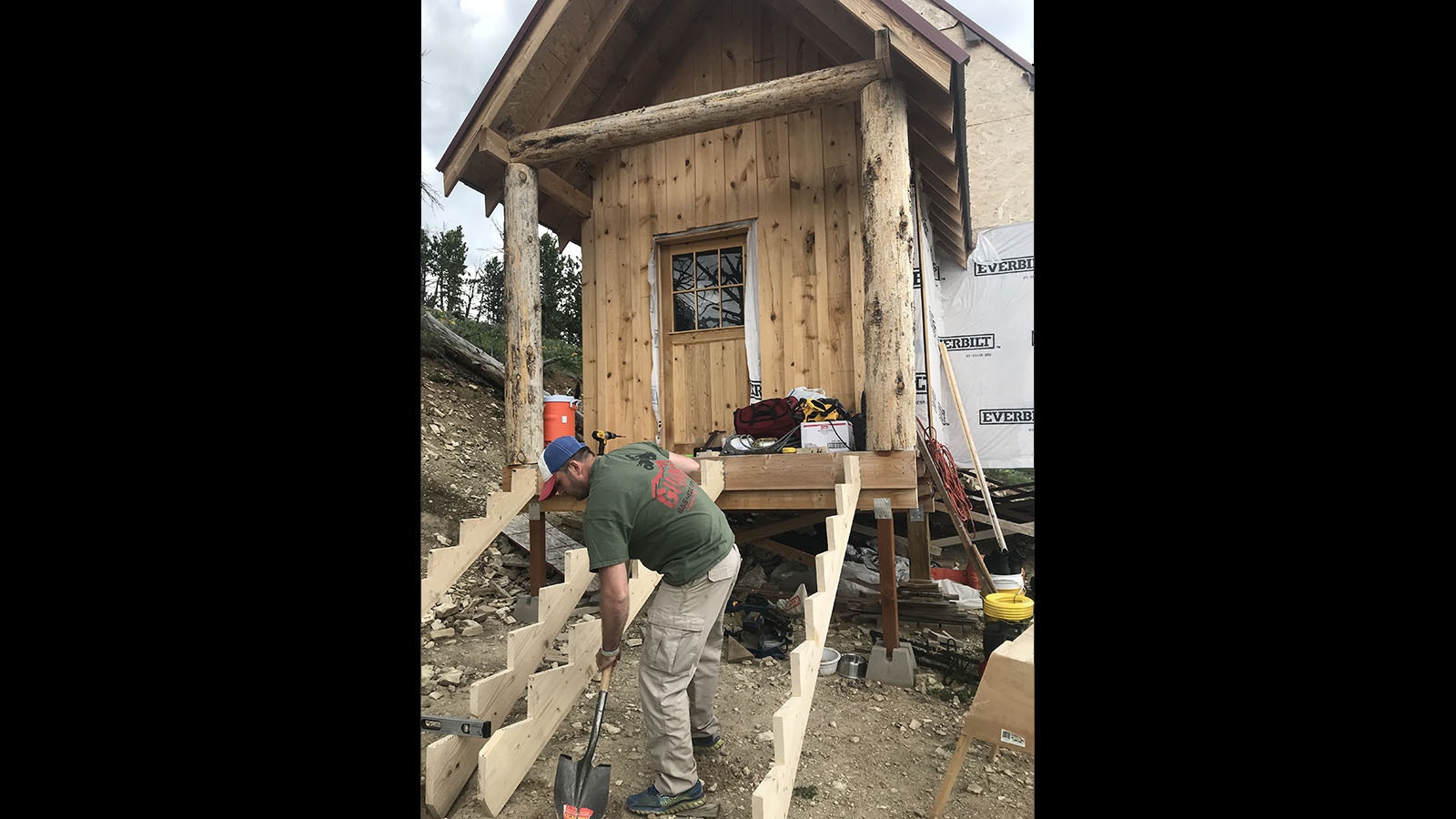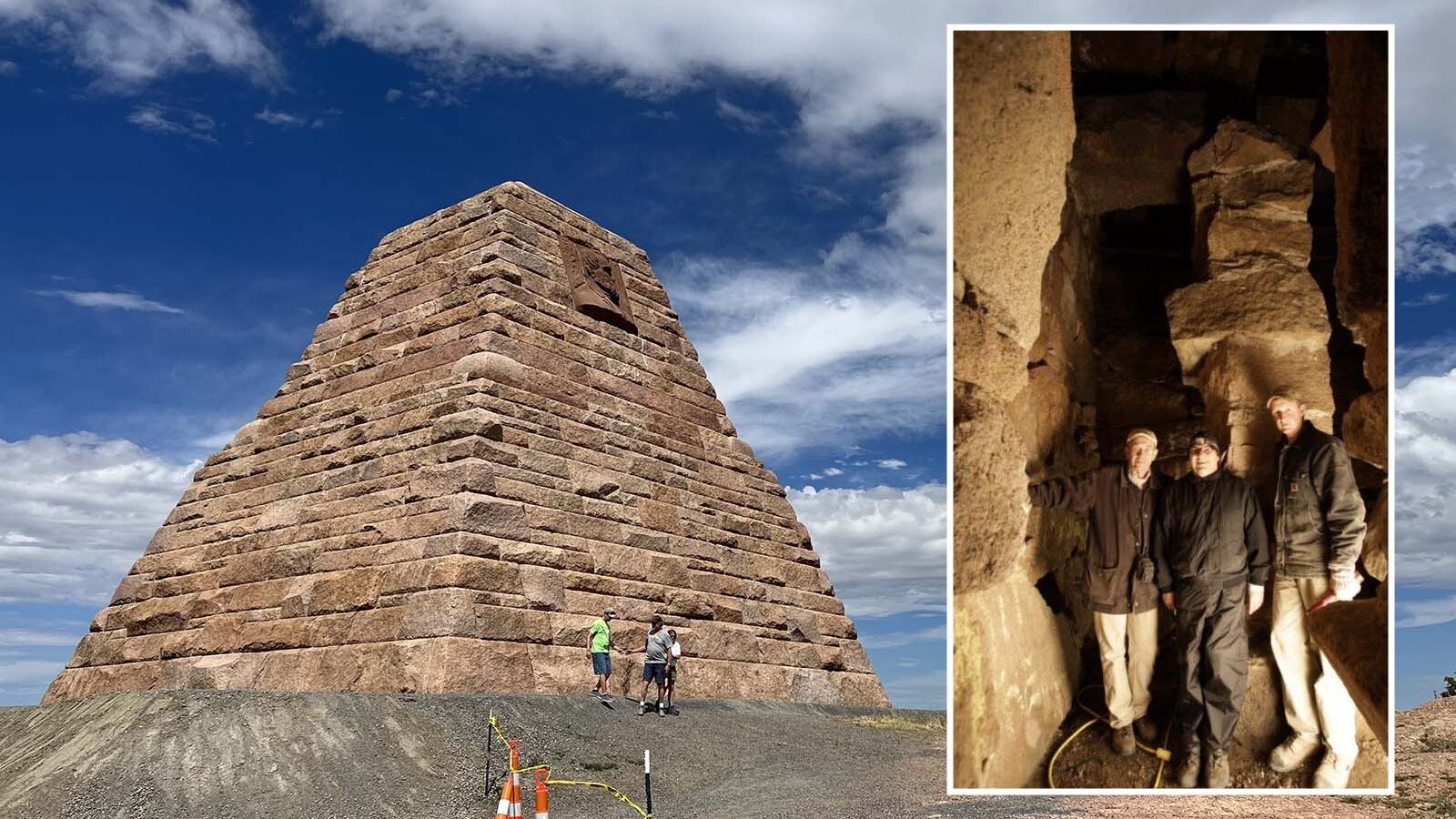Producing solar power for an off-grid homestead has advantages related to cost and independence, but when that system goes down, you’ve got to be equipped to deal with it.
When Cody Lettiere found out it was going to cost about $50,000 to dig a trench and run a connection to the electricity grid his cabin in the mountains near Dubois, he decided to explore a solar-powered alternative.
Lettiere bought his own independent solar power system and now seven years later, he’s one of a few Wyoming residents who isn’t subject to the rate hike that’s on the way from Rocky Mountain Power, the region’s largest power utility.
When Letteire bought the unfinished cabin overlooking Union Pass, a route through the Wind River Mountains between Dubois and Kendall Valley in 2017, there were several things he wasn’t prepared for.
The cabin needed electricity, a water system, plumbing, insulation, heating, and wall and floor coverings.
Did The Work Himself
Letteire grew up in northwest Wyoming and now lives in Chicago, Illinois. He said he didn’t know much about the construction trades or how difficult it would be to hire someone to do the work for him in this part of Wyoming.
“Everyone goes hunting in the fall,” he said. “It’s almost impossible to hire someone to do work up here.”
Everyone he knew tried to talk him out of building an off-grid home, including his wife, who said she wasn’t interested in roughing it in a mountain cabin. But the price was right, so he went ahead with the purchase.
“I’m not a carpenter or a roofer, but we did everything ourselves simply by research and trial and error,” he said. “Once I started down that path, I figured out that I didn’t want to hire people to do the work. We hung the doors, installed the windows and did the tile work and fireplace, and in all I figure it saved us about $200,000.”
Since 2017, he’s spent several weeks working on the cabin and enlisted help from friends. He installed a water system with a 1,200-gallon cistern, put in a wood stove for heat and finished the inside of the cabin.
He hauls water in a 500-gallon tank in the back of a pickup to fill the cistern. The cabin is plumbed, wired and finished just like a regular home, he said.
Today, the two-bedroom, one-bath cabin is complete and is offered as an Airbnb rental at $250 per night. Letteire said it’s been booked solid during the summer for the last two years and 2024 is filling up too. The cabin is not used regularly during the winter because access is difficult.
Off-Grid Solar – How It Works
Letteire’s cabin is set up with four 200-watt roof-mounted solar panels.
The panels are wired in a series and then connected to a charge controller. The charge controller’s job is to maintain a battery bank of eight AGM, or lead acid, batteries. When the batteries are low the charge controller allows a full load of current to flow through to the batteries. When the batteries are fully charged, the charge controller diverts power so the batteries don’t overcharge.
Solar systems produce direct current, or DC power, that must be converted to alternating current, AC power, to be used by modern appliances, so a DC-AC power inverter is connected to the battery bank.
The backup power system is a gasoline powered generator. After several days of low light or stormy conditions, the generator is used to recharge the battery bank. A transfer switch is wired into the system to allow the generator to charge the batteries.
Enlisting An Expert
Luke Stacy lives off the grid near Lander and is an expert in solar systems. He works for Creative Energies, a Lander company that specializes in off-grid solar applications.
Stacy told Cowboy State Daily the business has changed over the past 10 years from clients who need small systems on remote seasonal homes and hunting cabins to people who need larger systems on remote properties where they intend to live full time.
“It’s an interesting shift and we are seeing solar scaling up to meet the demand, especially on the battery side,” he said. “There are quite a few incentives for homeowners and small rural business owners including a 30% federal tax credit which knocks the cost of a system down.”
Either ground-mounted or roof-mounted solar panel systems are available. Both have certain advantages. Stacy said ground-mounted systems work better in areas that receive a lot of snow. He said they can be tilted to shed snow easier and be set at the correct aspect or angle to collect optimum sunlight.
Batteries are the most expensive part of an off-grid solar system. Lead-acid or AGM batteries are the most common because they are less expensive. Stacy said they need to be maintained at above 50% capacity for optimum battery life. Regular deep discharges on lead-acid batteries will shorten their life expectancy.
Lithium batteries last longer and can be recharged more times than lead-acid batteries, but they don’t recharge in cold temperatures.
“Long-term costs tend to be lower with lithium batteries and their life expectancy is 15 to 20 years,” he said. “With lead-acid batteries, you can expect five to seven years of life expectancy.”
When buying solar system components, Stacy said always look at warranties and contact customer service departments. Some products don’t offer a warranty, and that’s a red flag.
“If you want to understand if you’re getting a good product or not, ask to talk to customer support. If that checks out, then generally you are going to get a good, reliable product,” he said.
Solar System Output
Propane is known as the homesteader’s dirty little secret. Appliances that produce heat — like a crock pot, rice cooker or coffee maker — will suck the life out of a solar-charged battery bank. Propane appliances such as clothes dryers, refrigerators, ranges and freezers are more popular for off-grid applications.
Stacy said when consulting with people on off-grid systems, he advises looking at how they intend to use power.
“I would carefully consider energy consumption and how that effects budget and size of the system,” he said. “If you want to run a hot tub and all electric appliances, it’s possible, but it requires a larger system and investment. Other forms of energy will help offset electric consumption and minimize the overall size of the system.”
A common question Stacy receives at Creative Energies is from people who live in town but would like to kick their current power provider to the curb and install their own system.
Stacy said it’s typically not a sound financial investment. In this situation, he recommends a utility interactive solar system with grid-connected batteries for backup power.
For grid-connected properties, Wyoming and several other states offer a program called net metering. A grid-connected home that can produce more power than it uses can receive credit for the excess power from the utility provider.
Hybrid Off-Grid Power Systems
Wind and falling water are other resources that can be put to work to generate power on an off-grid homestead. Several companies offer wind and water turbines.
Wind turbines are commonly incorporated into off-grid solar power systems. All they require is a turbine, a pole, some wire and a charge controller to divert excess power when the battery bank is full.
Wind power can be used to supplement an off-grid solar system, but it comes with some challenges. Small wind turbines can be noisy and are best located downwind at a reasonable distance from a home.
Another thing to consider is the higher the turbine is mounted in the air, the more power it will produce. The downside of a tall wind turbine tower is that most contain a gear box that must be maintained at least once per year. That means the owner must be able to climb the tower or lower it to ground level to work on it.
Off-grid power systems all have pros and cons. On the positive side, it’s a homeowner investment that adds value to a property. They also protect homeowners from market price fluctuations and power interruptions.
But on the other hand, there will be regular maintenance to perform and anything that goes wrong you’ll have to either fix it yourself or hire an expert for the job.
Other Stories In This Series
Off The Grid In Wyoming: Wasting Water A Cardinal Sin For Homesteaders
Off The Grid In Wyoming: Choose The Right Spot For Your Modern Homestead
Off The Grid In Wyoming: It’s Not That Simple To Live Simply











